Sealants in construction are an imperative component. They are versatile materials for gap-filling, joint-sealing, and durable barriers against environmental elements waterproofing to the preservation of the structural performance of a project, as well as the final appearance of the work. Sealants play an important role in the success and durability of construction work.
Table of Contents
This blog discusses the importance of sealants in construction, their various benefits and types, specific applications, and the best practices followed in application
Must-Know Advantages of Using Sealants in Construction
1. Waterproofing and Moisture Control
Sealants form significant forms of moisture barrier, preventing water from entering through the joints, gaps, and seams. Such occupancy is crucial for a foundation, roof, and basement, which would otherwise incur structural damage and humidity within the premises, being ideal for growth by mould and mildew. Efficient moisture control would also prevent rusting and corrosion and prolong the structures’ life.
2. Withstanding Natural Forces
Besides keeping buildings dry during leakage, sealants also keep buildings protected from extreme weather, UV radiation, and heat and cold temperature changes. They seal leaks in roofs no matter how exposed to extreme heat or in windows even under freezer-like temperatures.
Sealants in construction offer flexibility, strength, and adhesion even under extraordinary environmental stress. They then help prevent degradation and guarantee that the structure always remains functional and acclimatized to the times.
3. Movement Accommodation and Flexibility
In numerous seasons during constant changes in temperature, settlement or earthquakes, a building is subjected to factors that lead to continuous movement. Flexible sealants are solutions to all movements, allowing the joints to expand and contract while avoiding cracks that could ultimately compromise the structure.
Indeed, this flexibility is important, especially in the case of a large structure ever-imposing high-rise buildings or bridges where even the slightest shift could result in great damage to the structure.
4. Noise and Vibration Damping
Sealants are in reduce noise in high-traffic industrial and residential buildings located on busy streets. They fill gaps, cracks, and seams in the building and create barriers for airborne sound invasion. Some sealants also reduce vibrations caused by machinery and transport.
5. Fireproofing Capabilities
Such sealants have been engineered to keep at least withstanding temperatures capable of resisting flame and hindering smoke. These help in filling any gaps around fire-rated doors, windows, and ducts, ultimately contributing to added safety within an area. They also assist in keeping the property intact during fires, allowing additional time for evacuation for those indoors.
6. Aesthetic Enhancement
Sealants in construction are available in different colours and finishes suitable for blending with various building materials. Sealants can be easily integrated into window, door, or edge features, without interfering with their designs.
Some are even paintable because they do not interfere with appearances; thus, sealing becomes aesthetic enhancement. Such enhancements through sealants keep the building, residential or commercial, looking attractive.
7. Prolonged Durability
These high-quality sealants are capable of rendering years of uncalled-for therapy even under the most extreme conditions. But their life span considerably diminishes the frequency of therapy and reapplication and saves a lot of money over the years.
The greatest impact of durability is felt in large-scale commercial and industrial buildings, where the cost of maintaining the integrity of joints and seals can be huge.
Different Types of Sealants Used in Construction
This vast variety of sealants in construction can allow you to use the perfect product for the requirement at hand. Here comes the introduction of the most common types:
1. Silicone Sealants
Silicone sealants are very flexible and have a good resistance to different weather conditions, and hence, more often than not, are widely used in construction. They provide good adhesion onto glass, metals, and ceramics, making them suitable for applications installed outside the buildings, like windows, doors, and facades, to name a few.
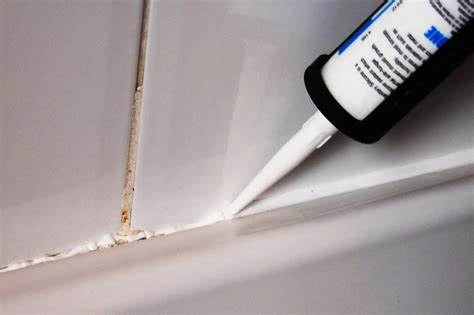
Silicone sealants do even better in areas that experience extreme hot and cold temperatures, so they can be said to be quite effective in such climates. Their durability and good elasticity make them ideal in areas where movements or areas that expand or shrink are frequent.
2. Polyurethane Sealants
Polyurethane sealants are known and used for durability and elasticity. They are resistant to chemicals, moisture, and UV light which makes them suitable for use inside as well as outside, on joints made of concrete and on roofing, as well as on expansion joints.
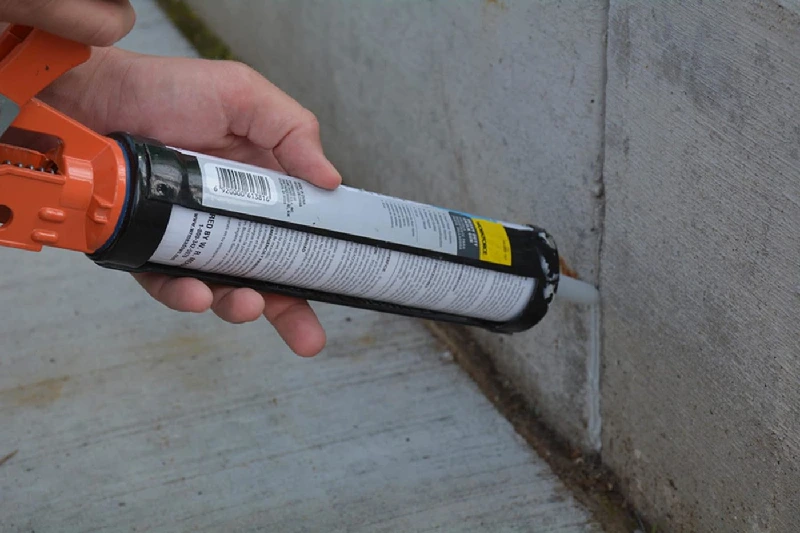
The extremely good adhesion they show allows them to be used on many different substrates: wood, metal, stone, etc. With their great versatility and endurance, they will even hold well in places where the weather is harsh, such as those receiving constant rain or UV light.
3. Acrylic Sealants
These are cheap and easy to handle. They perfectly bond to porous and nonporous substrates like wood and plasterboard. This typically uses indoor applications like sealing the gaps of baseboards and drywall.
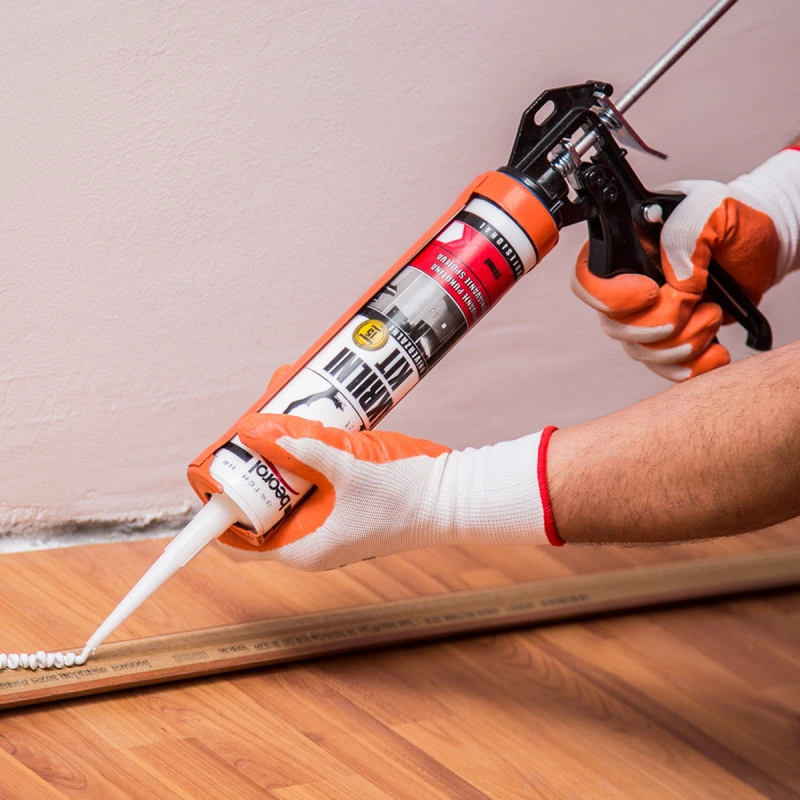
After application, the icing is painted to make it more attractive in indoor spaces. However, acrylic sealants dry quickly and are very well used in making a smooth finish, like sealing cracks or joints in walls and ceilings.
4. Butyl Rubber Sealants
These sealants are probably best known for being water resistant. They are used in applications such as roofing, guttering, and sealing metal panel systems. Butyl rubber sealants are indispensable for certain areas using them over exposed hot humid environments or very heavy rain.
They are known for their very good adhesion properties to non-porous surfaces as well as their ability to manage extremes of both high and low temperatures.
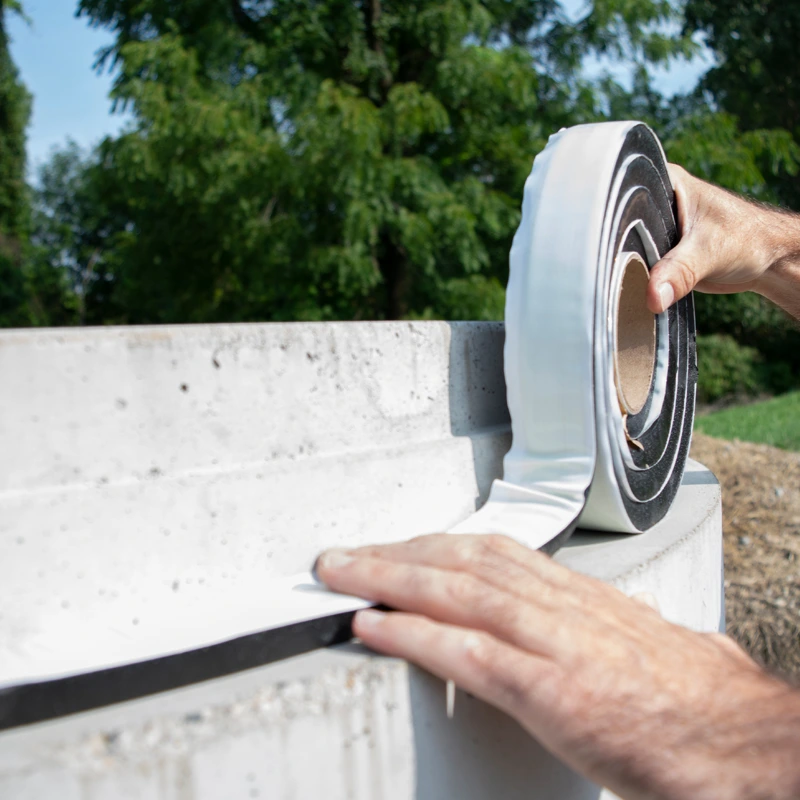
Typically favoured for their very high resistance to water penetration, they will often be found in applications where long-term reliability is needed for waterproofing, such as in the automotive or roofing industries.
5. Polysulfide Sealants
Polysulfide sealants are formulations designed for applications in which exposure to fuels or oils and some harsh chemicals affect the performance of elastomer sealants. They have applications mostly in specialized environments such as fuel tanks, chemical processing plants, and swimming pools.
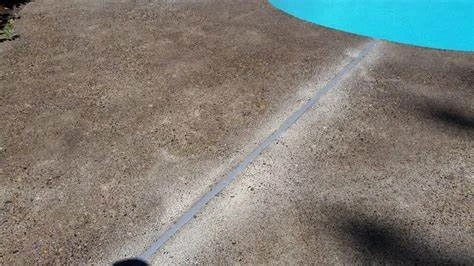
These types of sealants in construction are resistant to degradation in the environment and exposure to water, UV light, or chemicals. They also retain their flexibility for a long time, making them an ideally engineered joint sealant for sealing joints around objects, mostly in places where movement due to temperature differences occurs, such as around pipelines, and industrial tanks.
Key Applications of Sealants in Construction
The main applications of sealing in construction for strength, durability, and flexibility are as follows:
1. Sealing Interiors
Sealants are indispensable for creating airtight and watertight seals around windows and doors. These sealants develop seals through which conditioned air cannot escape, and neither can water infiltrate wafts and noises, significantly contributing to the energy efficiency and comfort of a building.
In an ideal situation, windows and doors become sealed and thus limit their exposure to moisture and other surrounding atmospheric elements, which is cost-reducing heating and cooling as well as elongating the lifespan of windows and doors.
2. Roofing Systems
Sealants in construction are very important in roofing and should be used to prevent leaks and add durability. They are majorly used in penetrations, seams, and flashing details for waterproofing and watertight protection of roofs from moisture and extreme environmental conditions.
Roof sealants play an additional insulation layer to the roof, thus reducing the amount of energy consumed as they work to maintain the indoor temperature quite stable.
3. Concrete Repairs
These are seals whose main purpose is to fill cracks and joints in concrete against water, chemicals and debris that can cause deterioration. This is very significant to the life of concrete structures such as bridges, pavements, and buildings.
In concrete repair situations, sealants are a protective barrier against further erosion and deterioration of the concrete surface, which may lead to expensive repairs.
Related Post: Guide to Concrete Repair and Protection
4. Bathrooms and Kitchens
Sealants are one of the basic critical areas in wet places such as bathrooms and kitchens. They are meant to be applied between wash basins, bathtubs, and countertops to provide watertight seals that prevent access to water and damage caused by mould growth.
Besides that, an ordinary sealant from a bathroom and kitchen is often blended with antimicrobial properties to reduce the risk of fungus and mildew- developing in humid areas.
A perfect sealant is useful for grouting lines, tiles, and other kinds of joints to remain intact and thus promises long-lasting performance against costly water damage to walls and the floor.
5. Industrial and Specialized Applications
In industrial places, sealants are the ones which seal machinery, pipelines, and chemical storage tanks. They also use it in a specialized manner, like underground waterproof construction or soundproof construction. These sealants would hold extreme conditions such as severe high pressure and temperature, and exposure to chemicals and corrosive substances.
In underwater constructions or specific areas like sealing electrical enclosures, the sealants used must be of specific industry standards for safety, durability, and effective performance under demanding operational conditions.
How to Apply Sealants: Step-by-Step Guide
Step 1: Preparing the Surface
Surface preparation is probably the most important aspect of adhesion. Clean all surfaces completely of dirt, dust, grease, and old sealant deposits. Remove debris with a wire brush or scraper, and ensure the surface is thoroughly dry to maximize sealant performance.
Step 2: Select the Right Sealant
The right sealant has to be chosen so that this point is incorporated into reaching the best results. The areas that will be very important to consider is how flexible and bonding strength it has with regards to the environment.
Step 3: Use Right Tools
Use appropriate tools such as a caulking gun, spatula, etc. for proper application. Cut the sealant nozzle at a 45-degree angle for an even bead application, and then smooth the sealant into place after application using a spatula or finger.
Step 4: Apply Sealant
Apply the sealant steadily along the joint, ensuring a bead that is unbroken and fills the entire gap. In larger spaces, backer rods can be used before applying the sealant to ensure a stable base for the material.
Step 5: Tool the Sealant
Smooth the sealant with the spatula, roller, and/or finger, ensuring a nice even spread and good adhesion. This will also help remove air bubbles and will give it a uniform finish. Clear up any excess sealant while still wet and before curing.
Step 6: Allow Curing
Sealants require a curing period to develop their full strength. It is therefore essential to adhere to the manufacturer’s curing memoranda, which vary according to sealant type and conditions in the surrounding environment. During this period, ensure that the applied sealant is undisturbed.
Conclusion
Sealants in construction are more than fillers. They are very important parts of a well-functioning, safe, and beautiful building. These sealants stretch from window sealing to preventing the leakage of water through concrete joints into a myriad of other applications.
Thus, one should understand the different kinds of sealants, their advantages, and the right application procedures; this way, you are well prepared to harness the most benefits while contributing to an efficient and durable construction project.
These high-quality sealants would then be properly applied and thus become a necessity for compliance and an important step towards the sustainability and durability of a structure.
FAQS
What do sealants in construction mean?
They are intended to fill the gaps, seal joints, and create barriers against air, water, and other environmental forces. These are necessary for the durability and effectiveness of construction projects.
Are sealants waterproof?
Yes, sealants provide waterproofing; in fact, almost all sealants would deny water entry and, therefore, damage from intrusion.
How do I apply sealants correctly?
Sealants may be applied with the use of a caulking gun, brushes, or sprayers; to have the best result, surfaces must first be cleaned and follow the manufacturer’s instructions.
Why are sealants important in construction?
Sealants close joints and gaps through which water and air can leak into and out of a structure. This improves the structural integrity and the energy efficiency of buildings while increasing their longevity.
Do sealants stop leaks?
Sealants may stop leaks in a succession of scenarios such as through roofs, windows, or even in concrete joints.
What is the strongest waterproof sealant?
Among the most durable and waterproof sealants are silicones and polyurethanes.
What are the causes of sealant failures?
The most common causes are poor surface preparation techniques, the use of inappropriate sealants for applications or incorrect sealant application.
What are some flexible sealants?
Not all sealants are flexible types, but a sealant like silicone or polyurethane is flexible and is, therefore, used to accommodate structural movements.
What happens when the sealant is not properly applied?
Improper applications will cause leaks, loss of bond and performance, and also shorten the duration before signs of potential structural failure can be expected.
What are the purposes of its most important aspects?
Sealants are useful for protecting structures against water and air penetration, movement accommodation, and improving aesthetics.
Sagar Telrandhe is a Construction Engineer with a B.Tech in Construction Engineering & Management. Passionate about infrastructure development, project planning, and sustainable construction, he specializes in modern construction techniques, project execution, and quality management, contributing to efficient and innovative building.

